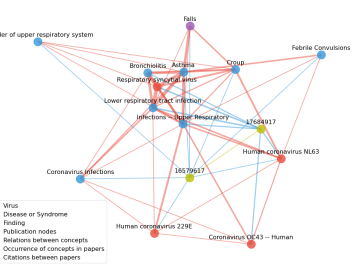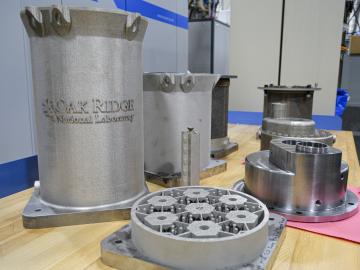
Filter News
Area of Research
News Type
News Topics
- (-) Artificial Intelligence (14)
- (-) Biomedical (13)
- (-) Coronavirus (15)
- (-) Cybersecurity (4)
- (-) High-Performance Computing (15)
- (-) Machine Learning (10)
- (-) Summit (12)
- 3-D Printing/Advanced Manufacturing (28)
- Advanced Reactors (11)
- Big Data (6)
- Bioenergy (19)
- Biology (16)
- Biotechnology (6)
- Buildings (8)
- Chemical Sciences (15)
- Composites (4)
- Computer Science (30)
- Critical Materials (6)
- Education (3)
- Energy Storage (26)
- Environment (29)
- Exascale Computing (4)
- Frontier (5)
- Fusion (6)
- Grid (10)
- Hydropower (1)
- Irradiation (1)
- Isotopes (7)
- Materials (35)
- Materials Science (33)
- Mercury (1)
- Microscopy (9)
- Molten Salt (3)
- Nanotechnology (16)
- National Security (6)
- Neutron Science (32)
- Nuclear Energy (18)
- Partnerships (18)
- Physics (9)
- Polymers (8)
- Quantum Computing (6)
- Quantum Science (12)
- Security (3)
- Simulation (9)
- Space Exploration (1)
- Transportation (22)
Media Contacts

Oak Ridge National Laboratory researchers have developed a machine learning model that could help predict the impact pandemics such as COVID-19 have on fuel demand in the United States.

A team led by Dan Jacobson of Oak Ridge National Laboratory used the Summit supercomputer at ORNL to analyze genes from cells in the lung fluid of nine COVID-19 patients compared with 40 control patients.

Scientists at ORNL used neutron scattering and supercomputing to better understand how an organic solvent and water work together to break down plant biomass, creating a pathway to significantly improve the production of renewable

Researchers at Oak Ridge National Laboratory developed a method that uses machine learning to predict seasonal fire risk in Africa, where half of the world’s wildfire-related carbon emissions originate.

A team of researchers has performed the first room-temperature X-ray measurements on the SARS-CoV-2 main protease — the enzyme that enables the virus to reproduce.

Oak Ridge National Laboratory has launched a program designed to accelerate deployment of innovations that may help fight the COVID-19 pandemic. The COVID-19 Rapid Access Licensing Program will allow companies to license these select technologies at no cost for one year.

Oak Ridge National Laboratory researchers have discovered a better way to separate actinium-227, a rare isotope essential for an FDA-approved cancer treatment.

Scientists have tapped the immense power of the Summit supercomputer at Oak Ridge National Laboratory to comb through millions of medical journal articles to identify potential vaccines, drugs and effective measures that could suppress or stop the

Researchers at the Department of Energy’s Oak Ridge National Laboratory are refining their design of a 3D-printed nuclear reactor core, scaling up the additive manufacturing process necessary to build it, and developing methods

Oak Ridge National Laboratory’s high-resolution population distribution database, LandScan USA, became permanently available to researchers in time to aid the response to the novel coronavirus pandemic.


